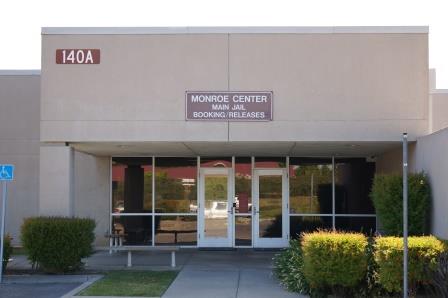Among other precautionary measures, dozens of inmates close to completing their sentences were released from both county’s jails
Law enforcement officials at both Sacramento and Yolo County announced that they would be releasing certain jail detainees from their custody in order to reduce the risk of a COVID-19 outbreak in their facilities, in addition to taking other social-distancing and hygienic measures.
Yolo Sheriff Tom Lopez presented updates in the March 31 Board of Supervisors meeting — conducted remotely via Zoom — on measures county jails are taking in the wake of the COVID-19 outbreak.
Both staff and inmates are having their temperatures taken regularly, and staff has increased screening for exposure or infection during booking occuring at the Juvenile Detention Facility in Woodland, according to Lopez. Inmates who show symptoms of or have had recent exposure to COVID-19 will be held in a 10-bed isolation unit at the Monroe Center facility, which the county plans to expand to 50 beds in the near future.
Officials also received a court order on March 20 allowing for the release of inmates who had 30-days or less remaining on their sentence, according to Lopez. A second order was obtained on March 24, expanding early release to those with up to 60 days left in their sentences. Both misdemeanor and felony cases were eligible for early release, except for individuals charged with violent or DUI-related offenses.
Individuals identified as transient at the time would also not be released under these court orders. Lopez said his office was working with the Yolo Health and Human Services Agency (HHSA) in order to secure temporary housing that would allow for the release of homeless individuals.
“We’re working with the HHSA for those folks that are homeless, for a smooth pass-through for them to house them in hotels if we end up having those folks being released,” Lopez said.
Lopez also said, as of the March 31 meeting, 20 inmates have been released early under these two court orders.
Yolo jails took further steps to reduce the risk of exposure from the outside. Visitation has been suspended at facilities and staff is facilitating phone contact with legal advisors to limit the amount of attorney visits to the jail, Lopez said. Phone cards have been provided to inmates to allow two 10-minute conversations per week in lieu of in-person visits. Arraignment and preliminary hearings are being conducted via remote video to limit the extent inmates travel outside the jail.
Early releases allowed the jail to house each inmate in a private cell, Lopez said, significantly reducing the risk of widespread infection in the event of an outbreak in the facility.
“It’s very unique — I’ve never seen us have the capacity to do this since I’ve been involved in our jail systems,” Lopez said. “Our current capacity, as I said before, is at 455. Today our current bed population is 207. So having the numbers down has provided us the opportunity to put everybody in a single cell — if the virus enters our detention system, we will be able to isolate everyone in their own room.”
Dan Fruchtenicht, Yolo’s Chief Probation Officer, presented a report on similar measures that the county is taking within the Juvenile Detention Facility in Woodland. Four youths are currently being held at the facility and Fruchenreicht said the juvenile system is working with courts to reduce this already low population.
Fruchtenicht said his office was taking steps to keep the juvenile facility population low, both by attempting to reduce recidivism and by encouraging officers in the field to make less arrests.
“We’ve directed our field staff to consult with management prior to making any arrest on a youth, to ensure that all alternatives were considered before booking,” Fruchtenicht said.
The youth facility has enacted no-contact visitation times, as well as increased phone call time for the detainees. A similar remote system to the adult facilities has been set up for legal proceedings and most programs as well as interactions with volunteers have been suspended, Fruchtenriecht said.
The Sacramento County Sheriff’s Office also announced that it would be releasing inmates under a court order issued around the same time. A March 25 notice from the office outlines similar criteria for early release — those who had 60 days or less left on their sentence, had not been convicted of a domestic violence-related nor sexual offense were eligible for early release under the court order. These standards applied to a significantly higher number of inmates in Sacramento’s larger jail population.
“This Order will result in the release of 421 inmates who are currently being housed at the Sacramento County Main Jail or the Rio Cosumnes Correctional Center,” the notice read. “The releases will take place on or before March 30, 2020.”
Written by: Tim Lalonde — city@theaggie.org




